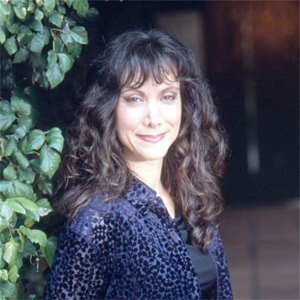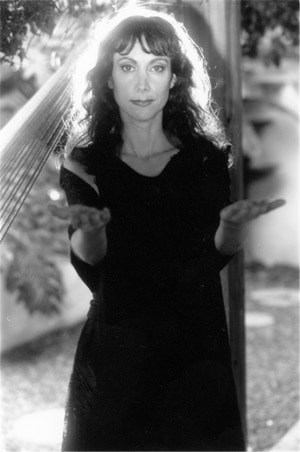Bridging the Worlds
Emotional and Spiritual Support For the chronically ill and for those in transition
|
By Ravi Miriam Maron, R.N., M.A., PhD. Certified Hospice Trained “Compassion in Action”
Certified Interfaith Minister
Phone sessions available as well. To arrange a visit or session, call 310-281-3016 or email [email protected] |
My Personal Journey

I am deeply grateful to the richness of the ancient ways in which I was reared and mentored, for its inspiration to me personally, and for how much it helps me to help others in my work as a healer and as a teacher of Kabbalistic and Shamanic healing modalities. The guidance of this knowledge has proven invaluable in guiding people of all backgrounds to restore parts of themselves that had gotten lost in the shuffle of life’s turbulent waves.
What first drew me to employ music and song in my healing work and to guide the journeys of those in transition was a very special experience I had during a visit with a Hospice patient, a young woman locked in a fatal coma. Something beyond me, and possibly within her, moved me to sing prayers to her, and to hum a melody from my tradition, what we call a nee’goon, or wordless song. Although the woman had throughout her comatose state not shown any signs of response or movement, the chant touched her so deeply that tears streamed out of her eyes, then her eyes opened all the way, and her mouth opened as if she was trying to speak, or perhaps sing along. Our eyes met and our souls connected in such a way that I became part of the world she was transitioning to while she reconnected with this world. I knew in that moment that my life would never be the same and that my path had shifted, and the direction was clear. I realized then how powerful chant is, and I began to examine more of the teachings of my people around this incredible mode of spirit communication and transformation. I learned about the efficacy of what I had done by following my intuition while in that room at the hospital, that chanting has the power to “lift up souls from out of the fertile void,” and that “the benefit of chant is without end and is the most potent form of healing” (18th-century Rabbi Nachmon of Breslav in Likkutei HaMaHaRaN, Ch. 60, No. 4, and in See’chot Ha’Ran, No. 273); and that chant was the very fabric that held together all of Creation: “Creator has said: ‘If not for the songs and chants that you sing every day, I would not have created my world’” (Midrash O’tiyo’t D’Rebbe Akiva Ha’Sha’leym, Nusach Alef [beginning]).
I continued to employ chant and music in my healing work, along with sacred rituals and guided journeying, observing with increasing awareness how these ancient modes were indeed potent tools for eliciting major shifts in the people I worked on and taught. I realized that in chanting I was blowing life-breath into the sacred stone or branch or plant that I would be using during healing rituals. Song conjured the spirit of the healing stone or plant and guided both client and ritual implement to a realm where the encounter of both became possible.
In my work with people whose souls are in transition, it is my intention to help ease their journey across the bridge leading to the realm from which we all came and onto which we all are destined to return. I work with both the people who are dying as well as with their family members, offering emotional, spiritual, and ritual support to heighten the quality of living in order to enrich the quality of dying. Dying, after all, is not an antithesis to living; it is an integral part of living. It is but the act of birthing into a whole different realm. “This life,” taught a first-century, B.C.E. rabbi, “is like preparing a banquet; the more attention we apply to the preparation of the banquet, the more we will be able to benefit when the time comes.”
What first drew me to employ music and song in my healing work and to guide the journeys of those in transition was a very special experience I had during a visit with a Hospice patient, a young woman locked in a fatal coma. Something beyond me, and possibly within her, moved me to sing prayers to her, and to hum a melody from my tradition, what we call a nee’goon, or wordless song. Although the woman had throughout her comatose state not shown any signs of response or movement, the chant touched her so deeply that tears streamed out of her eyes, then her eyes opened all the way, and her mouth opened as if she was trying to speak, or perhaps sing along. Our eyes met and our souls connected in such a way that I became part of the world she was transitioning to while she reconnected with this world. I knew in that moment that my life would never be the same and that my path had shifted, and the direction was clear. I realized then how powerful chant is, and I began to examine more of the teachings of my people around this incredible mode of spirit communication and transformation. I learned about the efficacy of what I had done by following my intuition while in that room at the hospital, that chanting has the power to “lift up souls from out of the fertile void,” and that “the benefit of chant is without end and is the most potent form of healing” (18th-century Rabbi Nachmon of Breslav in Likkutei HaMaHaRaN, Ch. 60, No. 4, and in See’chot Ha’Ran, No. 273); and that chant was the very fabric that held together all of Creation: “Creator has said: ‘If not for the songs and chants that you sing every day, I would not have created my world’” (Midrash O’tiyo’t D’Rebbe Akiva Ha’Sha’leym, Nusach Alef [beginning]).
I continued to employ chant and music in my healing work, along with sacred rituals and guided journeying, observing with increasing awareness how these ancient modes were indeed potent tools for eliciting major shifts in the people I worked on and taught. I realized that in chanting I was blowing life-breath into the sacred stone or branch or plant that I would be using during healing rituals. Song conjured the spirit of the healing stone or plant and guided both client and ritual implement to a realm where the encounter of both became possible.
In my work with people whose souls are in transition, it is my intention to help ease their journey across the bridge leading to the realm from which we all came and onto which we all are destined to return. I work with both the people who are dying as well as with their family members, offering emotional, spiritual, and ritual support to heighten the quality of living in order to enrich the quality of dying. Dying, after all, is not an antithesis to living; it is an integral part of living. It is but the act of birthing into a whole different realm. “This life,” taught a first-century, B.C.E. rabbi, “is like preparing a banquet; the more attention we apply to the preparation of the banquet, the more we will be able to benefit when the time comes.”


